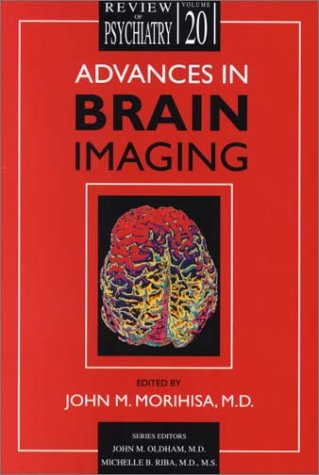

Most ebook files are in PDF format, so you can easily read them using various software such as Foxit Reader or directly on the Google Chrome browser.
Some ebook files are released by publishers in other formats such as .awz, .mobi, .epub, .fb2, etc. You may need to install specific software to read these formats on mobile/PC, such as Calibre.
Please read the tutorial at this link. https://ebooknice.com/page/post?id=faq
We offer FREE conversion to the popular formats you request; however, this may take some time. Therefore, right after payment, please email us, and we will try to provide the service as quickly as possible.
For some exceptional file formats or broken links (if any), please refrain from opening any disputes. Instead, email us first, and we will try to assist within a maximum of 6 hours.
EbookNice Team

Status:
Available5.0
27 reviews
ISBN 10: 1585620289
ISBN 13: 9781585620289
Author: John M Morihisa
Brain imaging and its application to major psychiatric disorders such as depression, obsessive-compulsive disorder (OCD), and schizophrenia is one of the most exciting fields in psychiatry today.
This thought-provoking collection details the work of five scientists who report some of the most recent findings in the field, review the relevant data in the literature, and place this research within a critical neuroscience context. Each chapter tells a fascinating story.
- Chapter 1, Functional Brain Imaging in Psychiatry: The Next Wave, reviews the strengths and limitations of functional magnetic resonance imaging (fMRI), emphasizes the therapeutic implications of brain imaging findings, and suggests that this field may achieve its greatest utility in the search for the genetic bases for psychiatric disorders such as schizophrenia.
- Chapter 2, Cognitive Neuroscience: The New Neuroscience of the Mind and Its Implications for Psychiatry, emphasizes the importance of cognitive deficits in our understanding of psychiatric disorders such as schizophrenia and OCD, presenting an exciting discussion of the development of a theory of altered executive function.
- Chapter 3, Functional Magnetic Resonance Imaging in Children and Adolescents: Implications for Research on Emotion, explains a compelling new way of using fMRI to investigate disorders of emotion (such as major depression, generalized anxiety disorder, separation anxiety disorder, and social phobia) in children, synthesizing neuroscience, psychiatry, and developmental psychology.
- Chapter 4, Brain Structure and Function in Late-Life Depression, presents both structural and functional brain imaging findings, such as decreased brain volume and abnormalities of regional cerebral blood flow, in patients with late-life depression, examining how they compare with younger patients with major depression and raising an intriguing question of trait versus state as the cause for some of these abnormalities.
- Chapter 5, Neuroimaging Studies of Major Depression, details a distinctive longitudinal and intensely multimodal neuroscience approach particularly well suited for brain studies, describing not only the abnormalities, but also the changes in these abnormalities after therapeutic intervention, showing that some appear to depend on the patient's mood and that other neurophysiologic differences persist even after treatment.
advances in brain imaging in multiple sclerosis
advances in fetal brain imaging
advances in brain cancer treatment
how has neuroimaging advanced brain research
advances in neuroimaging
Tags: John M Morihisa, Brain Imaging, Psychiatry